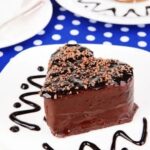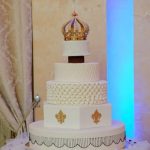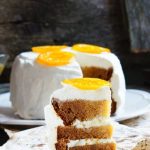Fondant has become increasingly popular in recent years for cake decorating due to its versatility and ability to create stunning, professional-looking designs. Whether you are a beginner or an experienced baker, learning how to decorate a cake with fondant can take your creations to the next level.
But what exactly is fondant? Fondant is a smooth and pliable icing that is often used to cover cakes, creating a sleek and polished look. It is made from sugar, water, and sometimes gelatin or corn syrup, which gives it its unique texture and consistency. Unlike buttercream frosting or ganache, fondant provides a solid canvas that can be easily molded and shaped into various designs.
The growing popularity of fondant for cake decorating can be attributed to its incredible versatility. Fondant allows decorators to achieve intricate details and sharp edges that are difficult to achieve with other frostings. It also provides a blank canvas for creativity, allowing bakers to let their imagination run wild when designing cakes for special occasions. Whether it’s for birthdays, weddings, or other celebrations, fondant is the go-to choice for those looking to create show-stopping edible masterpieces.
In the following sections of this article, we will guide you through the steps of decorating a cake with fondant. We will explore everything from gathering the necessary supplies to troubleshooting common issues that may arise during the process. By following our tips and techniques, you’ll soon be able to create beautifully decorated cakes that will impress everyone who sees them. So let’s get started on your journey to mastering fondant decoration.
Gathering the Necessary Supplies for Fondant Cake Decorating
When it comes to decorating a cake with fondant, having the right supplies is essential to achieving beautiful results. From special tools to quality ingredients, there are a few key items that every cake decorator should have on hand. In this section, we will explore the necessary supplies for fondant cake decorating and provide suggestions on where to purchase them.
Essential Tools
There are several tools that are essential for working with fondant. One of the most important is a rolling pin specifically designed for fondant, as it allows for smooth and even rolling of the dough.
A fondant smoother is another crucial tool, which helps to achieve a flawless finish when covering the cake. Other essential tools include an offset spatula for applying buttercream or ganache as a base before adding fondant, a sharp knife or pizza cutter for trimming excess fondant, and various sizes of round cutters or plungers for creating decorative shapes.
Ingredients
In addition to the necessary tools, it’s important to gather high-quality ingredients for fondant cake decorating. The main ingredient is obviously fondant itself, which can be purchased pre-made or made from scratch using marshmallows and powdered sugar.
It’s recommended to use store-bought fondant if you’re new to decorating with it, as homemade fondant can be trickier to work with. Other ingredients needed include shortening or cornstarch for dusting surfaces and preventing sticking, as well as edible glue or water for adhering decorations.
Purchasing Supplies
Now that you know what supplies you need for fondant cake decorating, where can you find them? There are several options available both online and offline. Many specialty baking supply stores carry a wide range of tools specifically designed for cake decorating with fondant.
Online retailers such as Amazon also offer a vast selection of fondant supplies at competitive prices. For those looking to save money, local craft stores may carry some basic fondant tools and supplies. It’s always a good idea to read reviews and compare prices before making a purchase to ensure you’re getting the best value for your money.
By gathering the necessary supplies for fondant cake decorating, you’ll be well-equipped to tackle any project with confidence. Invest in high-quality tools and ingredients, and don’t be afraid to experiment and try new techniques. With time and practice, you’ll become a master at decorating cakes with fondant. Now that we have covered the essential supplies, let’s move on to the next section: Preparing the Cake for Fondant Decoration.
Preparing the Cake for Fondant Decoration
Step 1: Leveling the Cake
Before applying fondant, it is crucial to ensure that the cake is level and flat. Using a serrated knife or a cake leveler, carefully trim off any domed or uneven portions from the top of the cake layers. This will create a more stable base for your fondant and prevent any bulging or shifting later on.
Step 2: Crumb Coating
To create a smooth surface for the fondant to adhere to, apply a thin layer of frosting or buttercream to the entire cake. This is known as a crumb coat and it helps seal in any loose crumbs and provides a sticky surface for the fondant. Use an offset spatula to spread an even layer of frosting over the entire cake. Make sure to fill in any gaps or crevices between layers.
Step 3: Chilling the Cake
After applying the crumb coating, place the cake in the refrigerator for at least 30 minutes. This will allow the frosting to firm up and set, making it easier to work with when applying the fondant. It also helps to prevent smudging or indentations on the icing when handling and smoothing out the fondant.
Step 4: Dusting with Cornstarch or Powdered Sugar
Before rolling out your fondant, lightly dust your work surface with either cornstarch or powdered sugar. This will prevent sticking and make it easier to handle and lift the rolled-out fondant onto the cake without tearing or stretching.
Step 5: Applying Fondant Smoothing Tools
Once you have rolled out your fondant into a large enough circle (or shape that matches your cake size), gently lift it using both hands and drape it over your frosted cake. Starting from the top of the cake, gently press and smooth the fondant using your hands or a fondant smoother. Work your way down each side, gradually smoothing out any air bubbles or wrinkles as you go.
Step 6: Trimming Excess Fondant
Using a sharp knife or pizza cutter, trim off any excess fondant from the bottom of the cake. Take care to make clean and even cuts along the edge to achieve a polished and professional look.
Following these steps will ensure that your cake is prepped and ready for fondant decoration. Remember, practice makes perfect, so don’t be discouraged if your first attempt doesn’t turn out exactly as planned. With time and patience, you’ll soon master the art of decorating cakes with fondant.
Kneading and Rolling Out the Fondant
Once you have gathered the necessary supplies and prepared your cake for fondant decoration, the next step is to knead and roll out the fondant. This process is crucial as it determines the smoothness and overall appearance of your finished cake. Follow these steps to ensure you achieve a flawless fondant coverage:
1. Kneading the Fondant:
Before rolling out the fondant, it’s essential to knead it properly to make it pliable and easy to work with. Start by cleaning your hands thoroughly and dusting your work surface with powdered sugar or cornstarch to prevent sticking. Place the fondant on the surface and use the heels of your hands to press down gently, stretching it away from you.
Next, fold the fondant over itself, give it a quarter turn, and repeat the process. Continue kneading for about 5-10 minutes until the fondant becomes soft, smooth, and elastic. If you notice any air bubbles while kneading, simply pop them using a pin or toothpick.
2. Rolling Out the Fondant:
After kneading, divide the fondant into smaller portions if needed or work with it as a whole if your cake requires a large sheet of rolled-out fondant. Begin by dusting your rolling pin with powdered sugar or cornstarch to prevent sticking.
Place one portion of the fondant onto your clean work surface and flatten it slightly with your hand. Roll out from the center in all directions, rotating occasionally to maintain an even thickness. Aim for a thickness of approximately 1/8 inch (3mm) for covering cakes.
To ensure that you are rolling out an even sheet of fondant, measure periodically with a ruler or gauge stick. This will help you achieve uniformity throughout.
As you roll out larger pieces of fondant, be cautious not to stretch or pull on the edges excessively, as this can cause the fondant to tear or become misshapen. If tearing occurs, you can gently patch it using some extra fondant or try rolling again from a different angle.
By mastering the art of kneading and rolling out fondant, you are one step closer to achieving a beautifully decorated cake. Remember, practice makes perfect, so don’t be discouraged if your first attempt isn’t flawless. With time and experience, you’ll find the techniques that work best for you and your unique cake designs.
Covering the Cake with Fondant
Once you have prepared and primed your cake, it is time to move on to the next step – covering it with fondant. This is where you can truly transform your cake into a work of art. Here, we will guide you through the process of covering the cake with fondant, providing step-by-step instructions for achieving a flawless finish.
- Start by preparing your workspace and ensuring that it is clean and dry. Dust your work surface with powdered sugar or cornstarch to prevent the fondant from sticking.
- Take a small amount of fondant and knead it until it becomes soft and pliable. Roll it into a smooth ball shape before rolling it out into a thin, even circle or rectangle using a rolling pin. Make sure that the rolled-out fondant is larger than the size of your cake.
- Carefully lift the rolled-out fondant using a fondant smoother or by gently wrapping it around your rolling pin. Gently place it over your cake, making sure to center it properly.
- Working quickly but carefully, smooth the fondant onto the cake using your hands or a fondant smoother. Start at the top of the cake and work your way down to avoid any air bubbles or wrinkles in the fondant.
- Trim off any excess fondant from around the base of the cake using a sharp knife or pizza cutter, ensuring a clean finish.
- If you encounter any cracks or tears while smoothing out the fondant, don’t panic. Simply patch them up by rubbing a small amount of water onto the affected area and pressing gently to seal.
- Once your cake is covered with fondant, you can further enhance its appearance by adding decorative elements such as ribbons, bows, or embossed designs using additional pieces of rolled-out fondant.
Remember, practice makes perfect when it comes to covering cakes with fondant. Don’t be discouraged if your first few attempts don’t turn out as expected – keep practicing and refining your techniques. With time, you’ll be able to achieve a flawless finish that will impress your friends and family.
Adding Decorative Details with Fondant
When it comes to cake decorating, fondant offers endless possibilities for adding decorative details that can elevate the design of any cake. Whether you want to create intricate flowers, sculpted figures, or embossed patterns, fondant provides a versatile medium that allows for impressive creativity. In this section, we will explore various techniques for creating decorative elements using fondant and discuss how to sculpt, mold, and emboss fondant to enhance the overall design of your cake.
One popular technique for adding decorative details with fondant is sculpting. Sculpting allows you to create three-dimensional shapes such as flowers, animals, or even make realistic figurines on top of your cake. To begin sculpting, start by kneading the fondant until it becomes soft and pliable.
Then, shape the fondant into the desired form using your hands or small tools like silicone molds or shaping tools. Remember to work slowly and patiently, adding small amounts of fondant at a time until you achieve the desired shape.
Another way to add decorative details with fondant is through molding. Molding involves pressing the fondant onto a mold or form to create intricate patterns or designs. There are various molds available in different shapes and sizes that can be used to imprint patterns onto rolled-out fondant.
These molds can range from floral designs to geometrical shapes and can be purchased from baking supply stores or online retailers. Simply press the rolled-out fondant onto the mold firmly but gently before carefully removing it to reveal the molded design.
Embossing is another technique commonly used with fondant to add texture and dimension to cakes. To achieve embossed patterns on your cake, first roll out a thin layer of fondant using a rolling pin. Next, select an embossing tool or textured mat that features your desired pattern or design.
Place the tool over the rolled-out fondant and gently press it into the surface. This will leave behind an embossed pattern on the fondant that can be used to create a stunning visual effect.
Coloring and Painting Fondant
Coloring fondant allows decorators to customize the appearance of their cakes, adding vibrancy and creativity to their designs. There are a few different methods for coloring fondant, each with its own advantages and techniques. Gel-based and powdered food coloring are the most commonly used options in cake decorating.
To color fondant using gel-based food coloring, start by adding a small amount of the desired color to a portion of white fondant. Use a toothpick or cocktail stick to transfer the gel color onto the fondant. Remember, a little goes a long way, so start with less than you think you’ll need and gradually add more until you achieve the desired shade.
Knead the fondant thoroughly until it is evenly colored. If necessary, add more gel color during this process.
Powdered food coloring can also be used to color fondant. Unlike gels, powders should be mixed with alcohol or clear extract before adding them to the fondant. This creates a smooth consistency that blends easily into the icing sugar mixture. Start by mixing a small amount of powdered color with alcohol or extract in a separate container until it forms a paste-like consistency. Gradually add this paste to the fondant while kneading until the color is fully incorporated.
For decorators looking for more intricate designs or detailing on their cakes, painting directly onto rolled-out fondant is an excellent technique that allows for precise control and beautiful results. To paint on fondant, use edible petal dusts or food coloring thinned with vodka or clear alcohol extract as your paint medium. Mix your chosen colors with small amounts of alcohol or extract until you reach the desired consistency – similar to watercolors but slightly thicker.
In addition to traditional painting techniques, there are many other ways to enhance painted designs on fondant cakes. Stenciling can create clean lines and crisp patterns by using stencils cut from plastic or paper. Airbrushing is another popular method that creates smooth gradients and textured effects on fondant.
When painting on fondant, it’s important to use a light hand and start with thin layers of color. Allow each layer to dry before adding more paint to avoid smudging or bleeding. Artists’ brushes with fine bristles are typically used for painting, but decorators can also experiment with other tools like sponges or small spatulas for unique textures.
Overall, coloring and painting fondant offer endless possibilities for cake designers, allowing them to create stunning and personalized works of art. With practice and experimentation, decorators can unlock their creativity and take their fondant cake decoration skills to the next level.
| Method | Description |
|---|---|
| Gel-based Food Coloring | Add small amounts of gel color to white fondant; gradually knead until fully colored |
| Powdered Food Coloring | Mix powdered color with alcohol or clear extract; gradually add to fondant while kneading |
| Fondant Painting | Thin edible petal dusts or food coloring with alcohol; paint directly onto rolled-out fondant using fine brushes or other tools |
Troubleshooting Common Fondant Decorating Issues
Fondant cake decorating can be a beautiful and impressive way to create stunning cakes for special occasions. However, it is not without its challenges. In this section, we will discuss some common issues that arise when working with fondant and provide solutions to help troubleshoot these problems.
One of the most common issues faced when working with fondant is cracking. Cracking can occur when the fondant dries out too quickly or when it is rolled out too thin. To prevent cracking, make sure to work on a smooth surface and roll out the fondant evenly using a rolling pin. If the fondant begins to crack while you are rolling it out, stop and let it rest for a few minutes to allow it to soften before continuing.
Another issue that may occur is tearing. Tearing can happen if the fondant is stretched too much or if it becomes too thin in certain areas. To avoid tearing, be gentle when handling the fondant and take your time when covering the cake. If you notice any torn areas, you can patch them up by gently pressing the torn edges back together.
Bulging is another common problem that can occur with fondant cakes. Bulging happens when air gets trapped between the cake and the fondant, causing it to bubble up or sag in certain areas. To prevent bulging, make sure your cake is properly chilled before applying the fondant. Additionally, use a sharp knife or pizza cutter to trim any excess fondant around the base of the cake, as this can also contribute to bulging.
| Problem | Solution |
|---|---|
| Cracking | Roll out evenly and let rest if necessary |
| Tearing | Handle gently and patch up torn areas |
| Bulging | Chill cake before applying fondant and trim excess carefully |
By being aware of these common issues and having the knowledge to troubleshoot them, you can confidently tackle any challenges that may arise when decorating cakes with fondant. Remember, practice makes perfect, so don’t be discouraged if things don’t go perfectly the first time. With time and experience, you will become a master at fondant cake decorating.
Finishing Touches and Presentation
After all the hard work you’ve put into decorating your cake with fondant, it’s time to add those final touches that will truly make your creation shine. The finishing touches and presentation are essential to creating a visually stunning cake that will impress everyone who sees it. Here are some ideas and tips for adding those extra elements and presenting your fondant masterpiece.
One way to elevate the overall look of your cake is by incorporating edible luster dust. Luster dust is a non-toxic powder that adds a beautiful shimmering effect to fondant. Simply brush a small amount of luster dust onto the surface of the fondant using a soft-bristle brush. You can choose from a wide range of colors to match your cake design or create an eye-catching contrast.
Another option for embellishing your cake is by using sprinkles or edible glitter. Whether you sprinkle them over the entire cake or strategically place them on specific areas, these additions can bring some fun and sparkle to your design. Experiment with different shapes, sizes, and colors of sprinkles to achieve the desired effect.
To truly make your cake stand out, consider adding decorative accents such as fondant flowers, bows, or figurines. These can be pre-made or handcrafted using fondant. You can mold or sculpt realistic-looking flowers or use cookie cutters in various shapes to create charming designs. Place these accents strategically on top or around the sides of the cake for an added wow factor.
Lastly, don’t forget about the presentation. A beautifully decorated cake deserves an equally appealing backdrop. Consider placing it on a decorative cake stand that complements the theme or color scheme of your creation. You can also use additional props like fresh flowers, ribbons, or themed decorations around the base of the cake for added visual interest.
Remember, there are no limits when it comes to finishing touches and presentation. Let your creativity run wild and experiment with different ideas. The more confident you become in decorating with fondant, the more unique and personal your creations will be.
Conclusion
In conclusion, mastering fondant decoration can open up a world of creative possibilities for cake decorators. Fondant offers unique properties that make it a popular choice for cake decorating, such as its smooth texture and ability to be shaped and molded into intricate designs. By following the steps and techniques outlined in this article, you can become skilled in working with fondant and create stunning cakes that are sure to impress.
Throughout this blog post, we have covered various aspects of fondant decoration, from gathering the necessary supplies to troubleshooting common issues. It is important to gather all the essential tools and ingredients needed before starting your fondant project. By preparing the cake properly and achieving a smooth surface, you set yourself up for success when applying the fondant.
Kneading and rolling out the fondant is a crucial step in achieving a flawless finish. The rolling techniques and tips provided will help you achieve the desired thickness and ensure an even coverage when covering the entire cake with fondant. Adding decorative details using sculpting, molding, and embossing techniques will further enhance your cake’s design.
Coloring and painting fondant opens up endless possibilities for customization. Whether using gel-based or powdered food coloring, you can create vibrant colors or subtle shades to suit your design. Hand-painting intricate designs on fondant adds a personal touch and allows you to showcase your artistic skills.
It is important to remember that practice makes perfect when it comes to working with fondant. Don’t be discouraged by any challenges you may face along the way. With patience and perseverance, you can troubleshoot issues such as cracking or tearing fondant. And finally, don’t forget about those finishing touches. Incorporating edible luster dust, sprinkles, or other embellishments will add that extra sparkle to your masterpiece.
So go ahead, unleash your creativity and experiment with fondant decoration. By following these steps and techniques, you will be well on your way to mastering fondant and creating beautifully decorated cakes that will leave everyone in awe. Happy decorating.

Welcome to my blog about home and family. This blog is a place where I will share my thoughts, ideas, and experiences related to these important topics. I am a stay-at-home mom with two young children. I hope you enjoy reading it! and may find some helpful tips and ideas that will make your home and family life even better!





